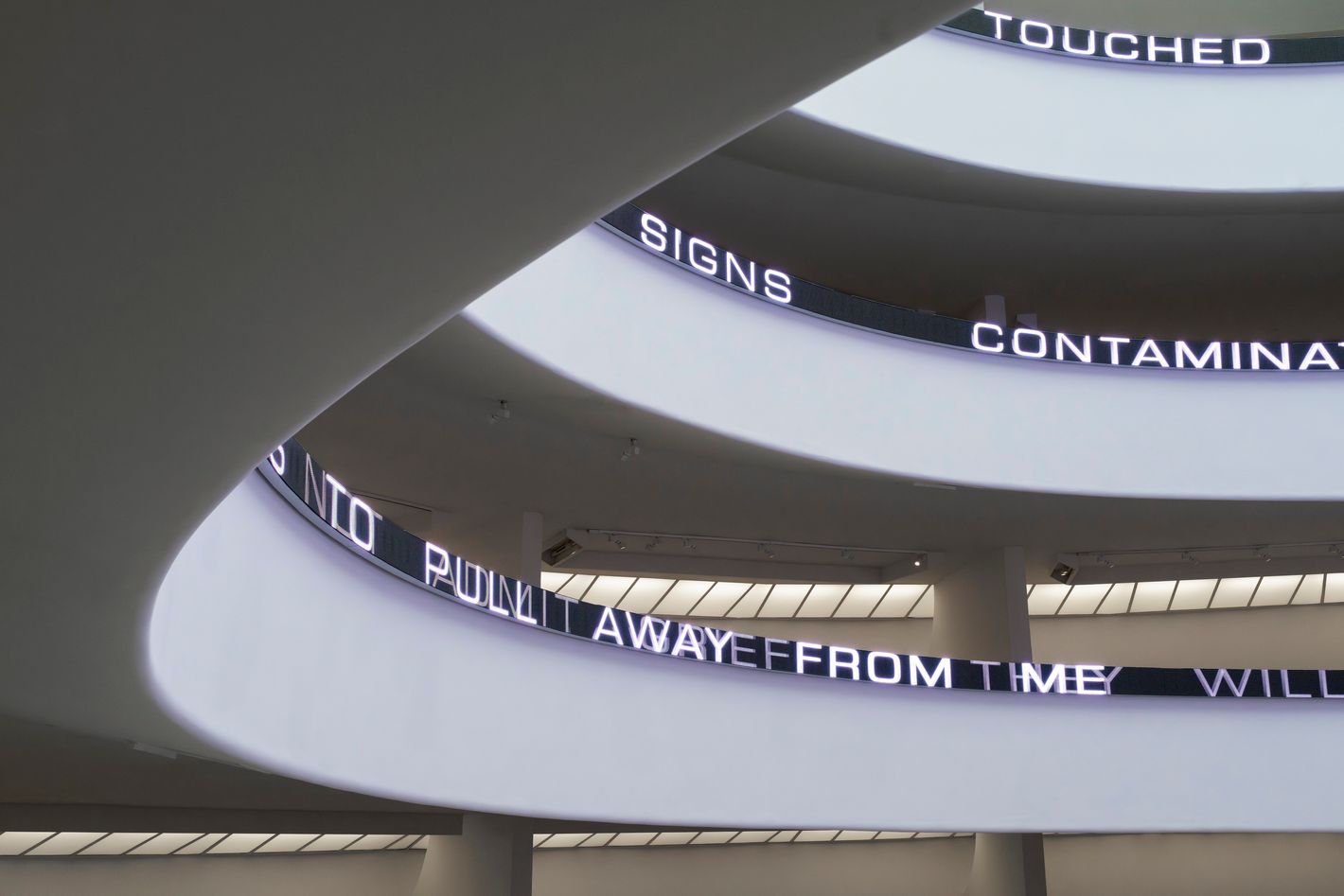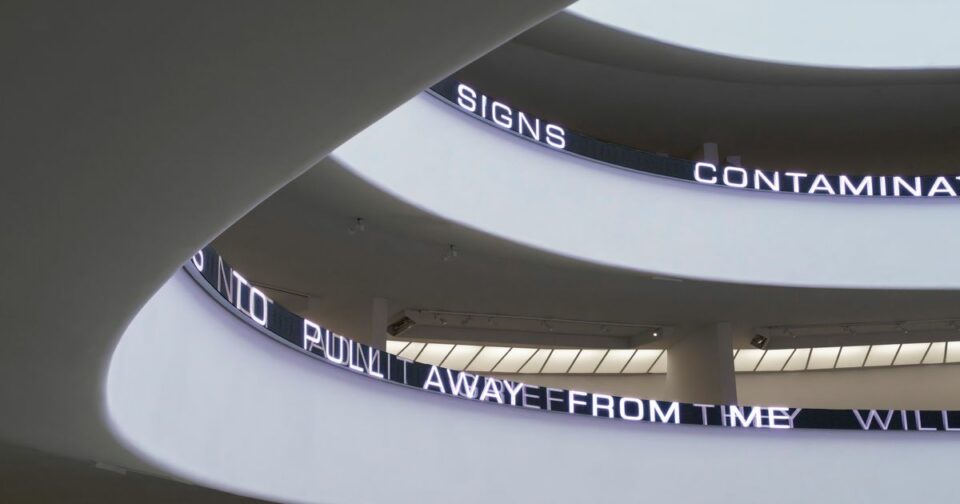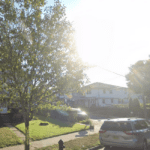
Jenny Holzer’s work talks a lot but says very little. An OG post-conceptualist, Holzer, 73, follows a generation of talkative artists like Joseph Kosuth, Lawrence Weiner, and Robert Barry. Holzer makes her utterances sensual and haunting by materializing words into light. Her primary operating system is the LED readout in a sans-serif font, a formalist leap that is as much her signature as fluorescent light tubes are Dan Flavin’s and boxes Donald Judd’s. Her work at its best suggests the ghostly, disembodied voice of the collective subconscious, but her current takeover of the Guggenheim reads more like intellectual clickbait for the extended Trump era.
Holzer emerged in the late 1970s putting up “Truisms” around downtown Manhattan. These posters had vaguely provocative sentences printed on them: A LITTLE KNOWLEDGE CAN GO A LONG WAY and ANIMALISM IS PERFECTLY HEALTHY and AN ELITE IS INEVITABLE. The work packed an underground energy by coming from an anonymous artist who turned out to be a woman taking matters into her own hands and demanding that attention be paid — to the streets, to the marginalized, to the masses. She ran MONEY CREATES TASTE on the electric sign at Caesars Palace in Vegas and wrote the words LACK OF CHARISMA can be fatal on a wooden postcard. We were all in on the joke: Art was infiltrating the world and speaking back to it.
It does so less today. At the Guggenheim’s “Jenny Holzer: Light Line,” her greatest hits, like “Truisms” and “Inflammatory Essays,” snake across the inner rotunda, an update on a show she did there in 1989 with the colors changed and resequenced. (A take on her 2008 façade-projection piece was on display at the Guggenheim last month.) Whatever profundity the original had has been emptied out, and the new material is particularly enervating. Cursed is composed of scores of rumpled metal scraps imprinted with Trump’s tweets and attached to the walls. We follow this for a few bays to where it ends in a pile on the floor.
Holzer’s writing style is not Barbara Kruger’s commanding voice of the Father. She implores, submits, and is passive aggressive. She is probably most famous for her pithy and clever PROTECT ME FROM WHAT I WANT and ABUSE OF POWER COMES AS NO SURPRISE, but her thoughts can be harder to parse when they run to longer than a sentence: MY OLD MOTHER WAS SCHOOLED BY HER FATHER. SHE HAD A SON DIE. I WOULD NOT DO HER ONE BETTER BY KILLING A GIRL. Ideas of sex, love, and subjugation frequently crop up, mingled with the macabre: WITH YOU INSIDE ME COMES THE KNOWLEDGE OF MY DEATH. In our time of pussy-grabbing and woman-hating, Holzer’s gnomic observations are indictments that hover above and outside of it all.
Elsewhere, a black granite sarcophagus is meant to be an homage to AIDS victims; this, too, empties into bathos. Part of the cringey text reads, I WILL THINK MORE BEFORE I CANNOT. I LOVE MY MIND WHEN IT IS FUCKING THE CRACKS OF EVENTS. I WANT TO TELL YOU WHAT I KNOW IN CASE IT IS OF USE. One work features the redacted FBI file of the painter Alice Neel, who was investigated for being a “romantic Bohemian type Communist.” We see government documents and paintings about surveillance, interrogation techniques, Nixon and Kissinger. If the point is that the government went too far during the Red Scare, it is one that has been made many times before to more powerful effect.
Holzer forces language to exist in symbiosis with architecture and space. It is the news ticker transformed to make buildings speak in uncanny voices. But as you gaze upward from the bottom of the Guggenheim spiral, the pieces fizzle into generic mall decorations. Or perhaps something you’d see at a crypto convention. Short exclamatory phrases drift by: I AM CRYING HARD. I BREATHE YOU. YOU ARE THE ONE WHO DID THIS TO ME. I LIE. NO ONE KNEW. MY MOTHER KNOWS. I CANNOT WALK. I AM LOSING TIME. I BITE. Gone is the psychosexual otherness of her earlier work and any vestige of speaking to institutional power. Holzer’s “Truisms” have ossified into didactics; at the Guggenheim, it comes off as a misuse of space.
Jenny Holzer: Light Line is at the Guggenheim Museum through September 29.
More art reviews
- Jenny Holzer’s Word Salad
- Maurizio Cattelan’s Enormous Wall of Kitsch
- LaToya Ruby Frazier’s MoMA Show Does Too Much
Jerry Saltz , 2024-06-14 14:00:29
Source link


